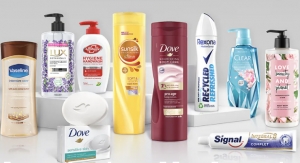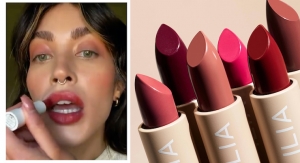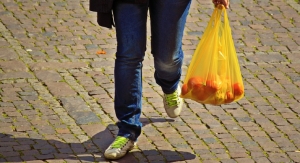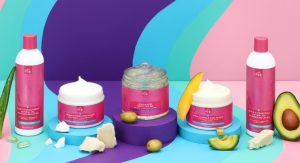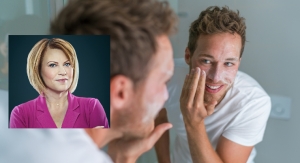John Nelson03.30.17
A recent market study from Smithers Pira has identified a number of factors that will shape evolution in packaging design across the next decade.
The Future of Packaging Design: Long-Term Strategic Forecasts to 2026 considers the diverse range of demographic and technical influences across all packaging segments, including those directly affecting brand and converter choices for cosmetics and personal care products.
An overarching trend is for more convenient packaging and ease of opening. Additional dispensing systems are a key method brands are using to add value to and differentiate products, though providing additional convenience to the consumer.
The same brand owners have come to appreciate that all other investment, from advertising to on-pack graphics, can be undermined or destroyed through a poor opening experience – or ‘wrap rage.’ Packaging design types that can minimize this phenomenon – for example, by incorporating tear strips into plastic protective films or doing away with them all together – are another focus.
Another major consideration is environmental sustainability. Here the main push is for light weighting – cutting the volume of raw materials used to make each unit of packaging, and consequently the carbon emissions associated with shipping and disposal at end of life. One approach is to redesign packs to enable this; though a more radical solution is to switch to a lighter format or material – for example from glass to clear plastic. In the beauty industry, this format switching has and will continue to be slower than in other packaging segments however, as it can seriously compromise the luxury persona of a cosmetic.
Smithers’ data shows that world demand for cosmetics and personal care packaging will be worth $21.3 billion in 2016. This is forecast to increase at 3.6% year-on-year through to 2021 when it will be valued at $25.4 billion. With a 20% market share, the U.S. remains the largest national market globally today, but it will be overtaken next year by China where rising incomes and a transition to western-style consumption patterns are fuelling demand.
Besides Asia, the nascent markets of Africa and then Middle East will also grow at well above the market average. As beauty brands come to operate in this more ethnically equal global marketplace, there will be an emphasis on products and packaging that appeal to more diverse ideas of beauty.
Furthermore, cosmetic and personal care products are still considered as non-essential products in emerging and developing markets – creating an onus on more engaging pack designs.
There is a wider trend for more men to buy not just staples – like shower gel, shaving products and oral products – but increasingly haircare and facial skincare products as well. This poses new challenges for pack designers to present what some have historically considered ‘feminine products’ in a masculine way.
In various sub-sectors, there will be more seasonal and event-based updates on packaging ranges. One recent example is Gillette’s Olympics 2016 editions of its Fusion ProShield range – whereby the brand aims to attract consumers by linking with recent or forthcoming events thereby creating an emotional attraction to their product.
One major retail trend that is conversely not affecting demand for beauty packaging is the rise of Internet sales via websites like beautybay.com. While packaging is no longer required to catch the buyer’s attention from a crowded shelf in a store it still fulfils a vital role in maintaining the customer experience of the product.
Counterfeit goods are rife on the Internet, high-grade packaging and print graphics can create a reassurance for consumers that they have bought genuine goods. This brand protection function can be enhanced with other technologies like invisible inks, special varnishes, embedded fibres or threats in label stocks, tamper-evident fixtures, and holographic foils.
These considerations mean there will still be demand for premium materials, artistic designs and tactile effects through to 2026 despite rising online sales.
ABOUT THE AUTHOR
The Future of Packaging Design: Long-Term Strategic Forecasts to 2026 considers the diverse range of demographic and technical influences across all packaging segments, including those directly affecting brand and converter choices for cosmetics and personal care products.
An overarching trend is for more convenient packaging and ease of opening. Additional dispensing systems are a key method brands are using to add value to and differentiate products, though providing additional convenience to the consumer.
The same brand owners have come to appreciate that all other investment, from advertising to on-pack graphics, can be undermined or destroyed through a poor opening experience – or ‘wrap rage.’ Packaging design types that can minimize this phenomenon – for example, by incorporating tear strips into plastic protective films or doing away with them all together – are another focus.
Another major consideration is environmental sustainability. Here the main push is for light weighting – cutting the volume of raw materials used to make each unit of packaging, and consequently the carbon emissions associated with shipping and disposal at end of life. One approach is to redesign packs to enable this; though a more radical solution is to switch to a lighter format or material – for example from glass to clear plastic. In the beauty industry, this format switching has and will continue to be slower than in other packaging segments however, as it can seriously compromise the luxury persona of a cosmetic.
Smithers’ data shows that world demand for cosmetics and personal care packaging will be worth $21.3 billion in 2016. This is forecast to increase at 3.6% year-on-year through to 2021 when it will be valued at $25.4 billion. With a 20% market share, the U.S. remains the largest national market globally today, but it will be overtaken next year by China where rising incomes and a transition to western-style consumption patterns are fuelling demand.
Besides Asia, the nascent markets of Africa and then Middle East will also grow at well above the market average. As beauty brands come to operate in this more ethnically equal global marketplace, there will be an emphasis on products and packaging that appeal to more diverse ideas of beauty.
Furthermore, cosmetic and personal care products are still considered as non-essential products in emerging and developing markets – creating an onus on more engaging pack designs.
There is a wider trend for more men to buy not just staples – like shower gel, shaving products and oral products – but increasingly haircare and facial skincare products as well. This poses new challenges for pack designers to present what some have historically considered ‘feminine products’ in a masculine way.
In various sub-sectors, there will be more seasonal and event-based updates on packaging ranges. One recent example is Gillette’s Olympics 2016 editions of its Fusion ProShield range – whereby the brand aims to attract consumers by linking with recent or forthcoming events thereby creating an emotional attraction to their product.
One major retail trend that is conversely not affecting demand for beauty packaging is the rise of Internet sales via websites like beautybay.com. While packaging is no longer required to catch the buyer’s attention from a crowded shelf in a store it still fulfils a vital role in maintaining the customer experience of the product.
Counterfeit goods are rife on the Internet, high-grade packaging and print graphics can create a reassurance for consumers that they have bought genuine goods. This brand protection function can be enhanced with other technologies like invisible inks, special varnishes, embedded fibres or threats in label stocks, tamper-evident fixtures, and holographic foils.
These considerations mean there will still be demand for premium materials, artistic designs and tactile effects through to 2026 despite rising online sales.












